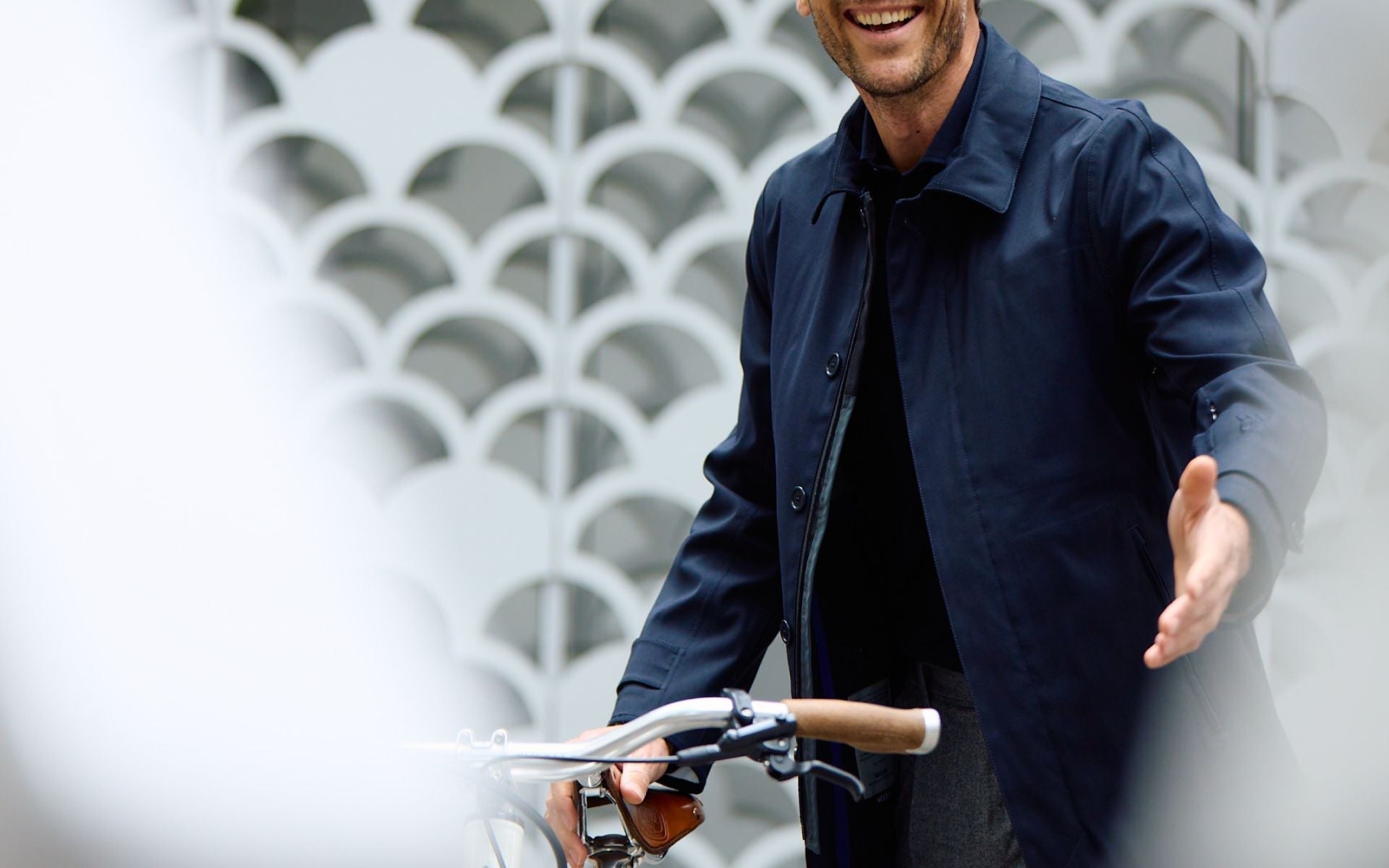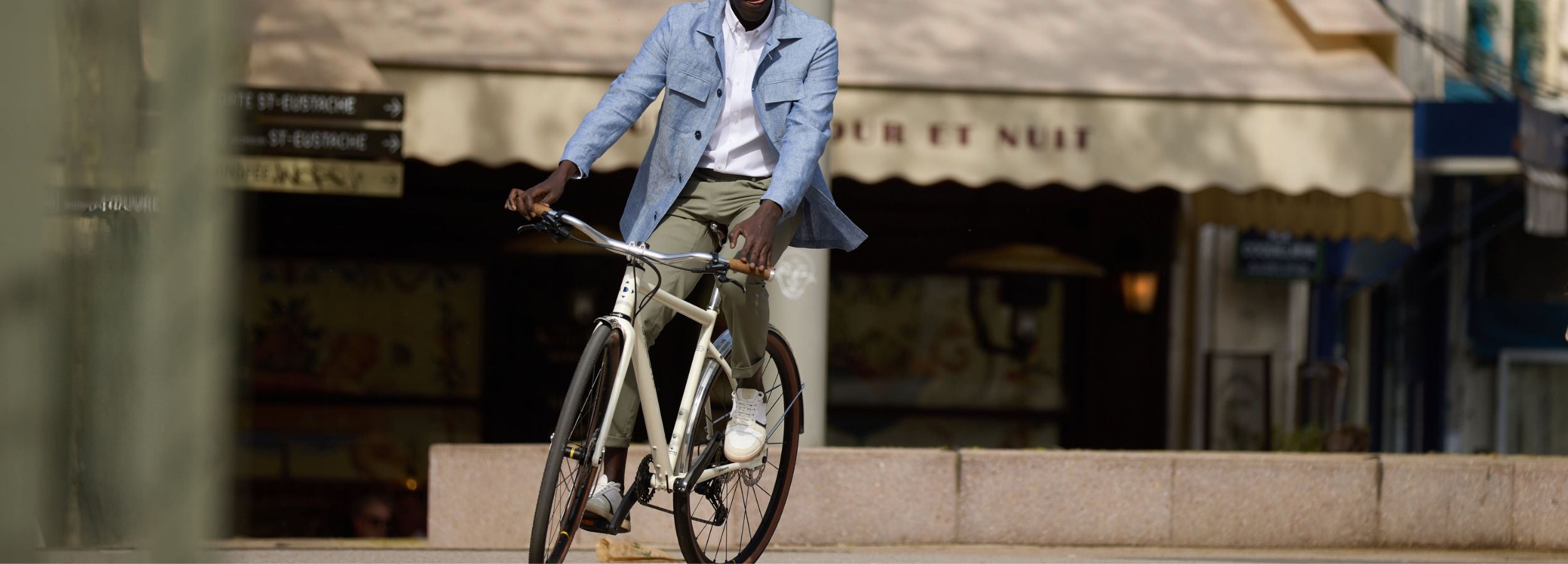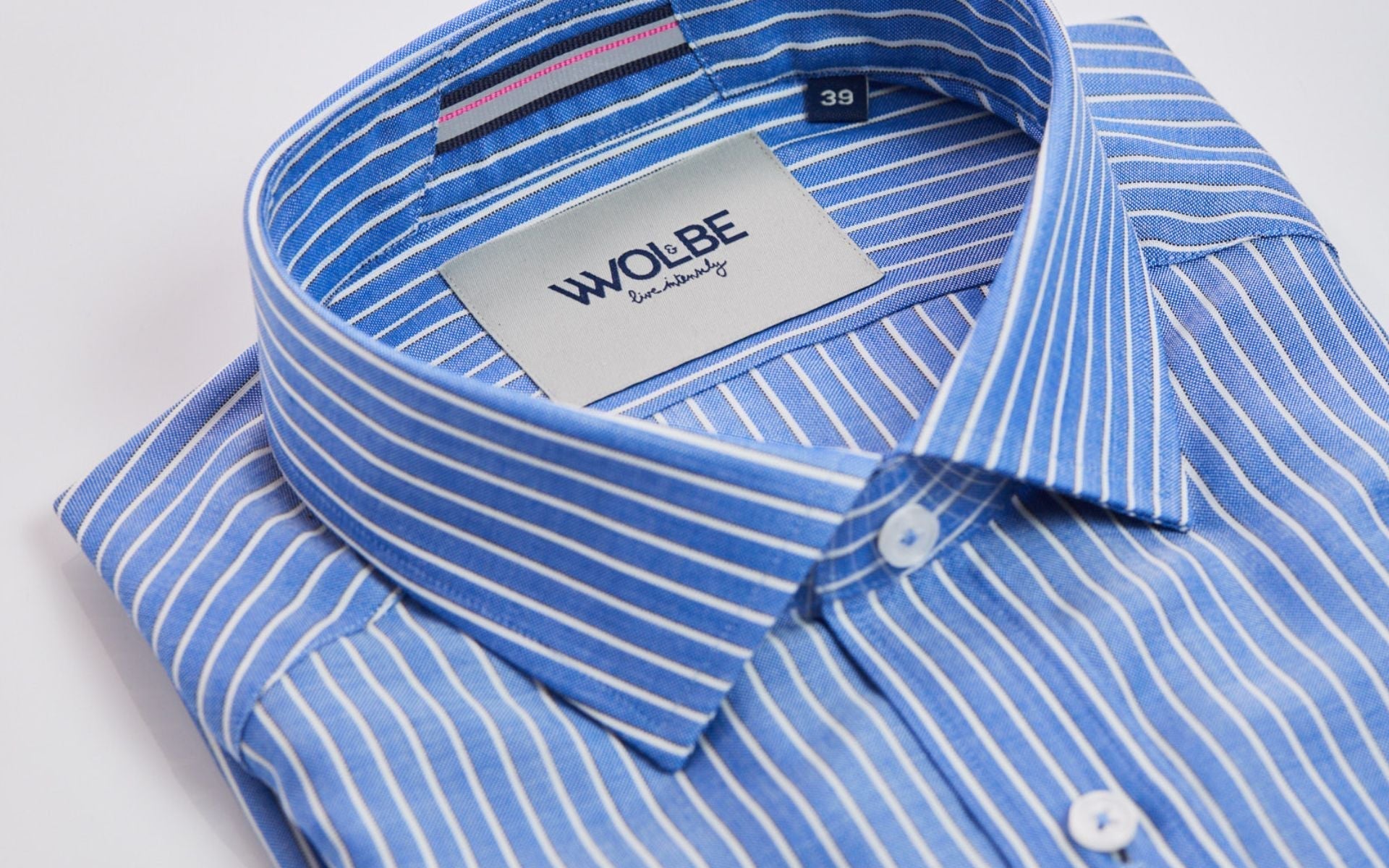
How to sweat less | good layering is the solution (3/3)
Who's familiar with layering, or the three-layer system? It's an essential rule of the sports wardrobe. It involves choosing your layers of clothing wisely so you're neither hot nor cold.
The secret is to adapt your outfit to the intensity of the planned effort and the outside temperature. By promoting good perspiration wicking!
In the city, since we're leaving for the whole day without necessarily having the opportunity to change, it's even more important. To optimize our well-being, we'll need to:
- a breathable “first layer”
- a breathable and warm “second layer”
- a “third layer” that protects against the cold and bad weather
1) Layering seeks to keep you cool and dry
Sweating is the main cause of our discomfort during exercise.
It makes our clothes “stick” to our skin.
To reduce this discomfort, we must first limit the rise in our body temperature and encourage the rapid evacuation of moisture to the outside.
When hiking, this is how the three-layer system optimizes well-being and performance (attached is the diagram from the Millet website )
To define what is good for the city, we will therefore simply adapt the reasoning to our more formal outfits.
2) Does layering fit into city wardrobes?
Thanks to Wolbe, yes!
1) the first layer must be breathable
It is the one that we have in direct contact with the skin. In town, it will be a shirt , a polo shirt, a polo shirt , or even a t-shirt that we will wear under a button-down sweater .
This is certainly the most important of the triptych, and often the most neglected. By wicking perspiration away from the skin, it prevents the feeling of cold due to its evaporation. It must absorb perspiration easily and dry quickly.
Merino wool is undoubtedly the best natural material in the field. The scales positioned on its fiber trap air bubbles that create an insulating film. This keeps you cool when it's hot and warm when it's cool. This "regulated" temperature greatly delays the onset of the sweating mechanism!
Tencel® keeps you cool, dries quickly and reduces odors.
VISCOSE , a wood pulp derivative like Tencel® (but chemically treated in a much less eco-responsible way) was for example analyzed - in the same study by the University of Ghent - as being free of smelly bacteria. It will therefore be a relevant choice for interior linings.
37°5® technology enables active thermoregulation. Microparticles infused into the fibers capture the infrared rays emitted by the body when it heats up, quickly wicking them away. This mechanism helps maintain a constant body temperature of 37°5 and limits perspiration.
Polyester is effective in drying but not in odor management.
Finally, cotton absorbs well but does not dry properly. When you consider that 95% of men's shirts are made of cotton...there is a first inconsistency !
2) the second layer is thermal and breathable
Its role will be to slowly dissipate the heat produced by the body, to maintain a constant temperature. And above all, to let water vapor pass through so as not to create a steam room effect under the clothing.
The warmth of this second layer must therefore be proportionate to the weather and the intensity of the activity. A single garment is therefore generally not enough for all situations.
In the city, the second layer will generally be a sweater , a blazer , a light jacket , a suit jacket or even a small sleeveless down jacket - body warmer.
In terms of materials, there are no new developments in terms of breathability and odors. Merino wool , Tencel® are the mainstays. Polyester is not recommended if you are sensitive to odors.
Cotton not recommended for heavy movements.

3) the third layer must be protective
It must be very effective against the outside elements: cold, rain, wind. Otherwise, it will lose heat. And breathable if you plan to pick up the pace. Alternatively, a car coat , a coat , a raincoat , a parka , a windbreaker .
This third layer is undoubtedly the most expensive and the most technical. It's up to you to define the requirement that suits you! The range of protections - and therefore prices - is very wide.
Between a water-repellent jacket (chemically treated at the end of production to make water slide off... guaranteed only for a certain number of washes) and a completely waterproof jacket (thanks to a membrane resistant to 20 m of water and full heat-sealing), prices can be multiplied by 10.
Once again, we must not neglect the breathable aspect of this third layer: intrinsic breathability of the fabric (thanks to breathable membranes from Sympatex® or Goretex®) or zips under the armpits...
3) Focus on relevant tips for optimal layering
- Be demanding about the ventilation of the last layer. It is as important as waterproofing if you are moving around. There are therefore several options: zips under the armpits, vents with a few holes, etc.
- If you're cycling, choose panniers over backpacks. No clothing can truly absorb the significant impact of the bag's pressure on your back...



